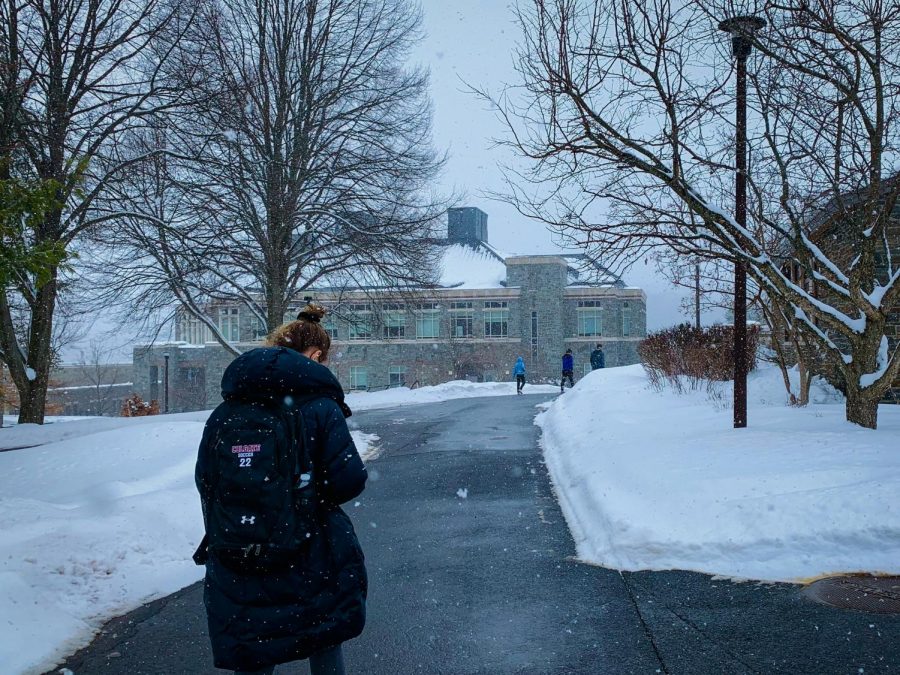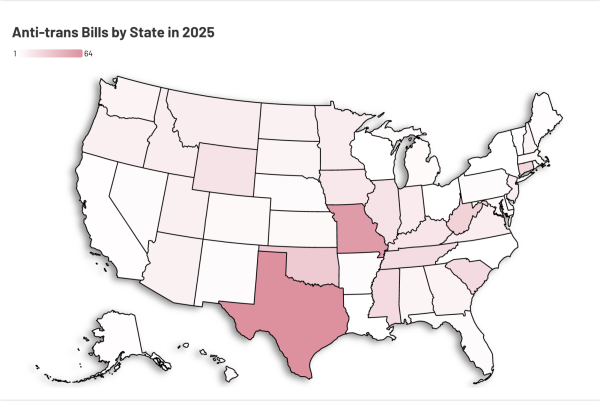As colleges go test-optional, application rates surge
As universities have lifted testing as a requirement to apply, colleges have seen applicant numbers rise. Colgate University applications soared by 102.6 percent this year, following their partnership with a scholarship program and a no-loan initiative for families.
The release of early admissions decisions for most top universities has forced high school seniors across the country to face an unsettling truth: COVID-19 has dramatically complicated chances of admission into many selective and elite universities. Colleges are experiencing unprecedented surges in application numbers, resulting in record lows in acceptance rates, forcing more qualified applicants than usual to be turned away.
Decisions released prior to the Regular Decision notification period – which typically occurs between late March and early April – are usually in the form of two application types: Early Decision and Early Action. Early Decision plans are binding, meaning if accepted, an Early Decision applicant must attend the college. Early Action is non-binding, but follows the same expedited timeline as Early Decision.
The widespread adoption of a test-optional policy by most colleges has been a major cause of increased applicant pool size. When the COVID-19 pandemic shut down SAT and ACT testing sites around the nation, many colleges switched to test-optional policies in order to accommodate many students’ inability to take a test.
For students who performed poorly on standardized exams but obtained highly competitive grades, test-optional policies were advantageous: these students could apply to more prestigious colleges where their lower test score might have otherwise dampened their application.
According to a study conducted by Inside Higher Ed, application numbers typically rise by an average of 29 percent at private institutions and 11 percent at public institutions when schools switch to test-optional admissions policies.
Removing the testing requirement not only impacted the growth in applications, but played a pivotal role in changing the makeup of the applicant pool. Masters’ Director of College Counseling Adam Gimple spoke to this shift.
“By virtue of the fact that testing was no longer a component of the required application, you have candidates who, historically, because of that singular component, did not apply, are now applying as well,” he said. “You have an increase in first generation students who are applying now, because now they don’t have that one obstacle of standardized testing.”
Colgate University recorded a staggering 102.6 percent increase in applications for the Class of 2025. The University received a total of 17, 392 applications this year after moving to a test-optional policy, partnering with QuestBridge National College Match – a college scholarship application process that allows gifted low-income seniors to gain admissions and scholarships to selective colleges – and introducing a no-loan initiative for families with an income under $125,000. Colgate admissions officer Olivia Miller, who was only able via email with Tower, noted a rise in the academic quality of applicants this year, compared to previous years. Miller also cited major growth in applications from students of color, students from the Southeast and international students.
The coronavirus pandemic has, in certainsome ways, increased accessibility in applying to college for some. J.D. Ross, the Associate Dean of Admission and Director of Admission Communication at Hamilton College, found that the shift to remote tours and interviews served to standardize the college admissions process.
Ross said, “In the past, if you were interested in a college and wanted to show that you were interested in a college, you had to travel there, go on a campus tour or an information session and have a one-on-one interview. Covid is kind of the great equalizer with the fact that now everybody is doing these things online. And so, we are seeing students engaging with us that may not have had that opportunity to before.”
This admissions cycle, students are applying to more schools on average – a considerable element in the major applicant pool growth. This year, on average, Masters seniors applied to 10.2 schools, as compared to 2020’s average of 8.5 schools.
Gimple said, “People are applying to more schools, probably because they didn’t visit campuses this past year. They don’t know what they are really looking for so they’re going to diversify and increase the amount of colleges they’re applying to so they can have better options in the spring.”
Senior Elizabeth Oakes frantically expanded her college list after Early Decision outcomes began to stream in.
“I was originally planning on applying to only five schools. I loved each of them and didn’t apply to any others because I was so sure I wouldn’t be happy anywhere else,” she said. “Once I saw a bunch of my friends and peers getting unfavorable outcomes when decisions started to come out, I added nearly ten more schools to my list.”
Around 50 to 55 percent of the current senior class applied Early Decision, a similar number to the last few years. According to Gimple, the percentage of admitted seniors who applied Early Decision this year falls below the numbers from last years’ seniors. However, if the number of admitted applicants is combined with the deferrals, this year is only slightly lower than the previous year.
The sweeping effects of the pandemic have resulted in applications looking less complete and very different this year. Students’ applications might be missing standardized test scores and semester grades, as schools across the country, including Masters, switched to a pass/fail grading system when students began learning remotely.
Ross described the impact the lack of second semester grades might have had on their potential admission.
“We realize that this is all beyond the control of the students who are applying to colleges,” he said. “A pass/fail grading system does make it a little more difficult to evaluate students, but it just presses us to make the best use out of what we have.”
Ross continued, providing insight into how Hamilton has adapted in evaluating applicants without grades.
“We also rely quite a bit on counselor and teacher recommendations. These are people that know you really, really well, and can vouch for your academic abilities, your position in the class and your academic trajectory, in spite of the fact that some of that gets lost in pass/fail grading.”
Miller echoed the sentiment: adopting a pass/fail grading system among other changes like clubs and activities being put on hold are not being held against applicants in Colgate’s review process.
Colleges and universities that have a deep relationship with Masters can also use reference historical data for context in the absence of spring grades.
Gimple said, “They know what the curriculum is like here, they know what the relative rigor of our coursework is like. And so, when a student applies, and perhaps doesn’t have test scores, or spring semester grades from junior year, or sophomore year or freshman year, they have a greater context.”
Senior Carly Grizzaffi, reflecting on uncertainty and unpredictability of college admissions this year, shared her own worries for the spring.
“Normally, when you apply to college, or at least what I’ve been told is, you get into all of your safeties, more than half of your matches and maybe one reach if you’re lucky,” she said. “Now I’m kind of scared I’m not going to get into some of my matches. That’s pretty terrifying to not know.”

Senior Sophie Grand, currently Tower’s chief design editor, is in her second year on staff, previously serving as an opinion editor.
Grand plays...










